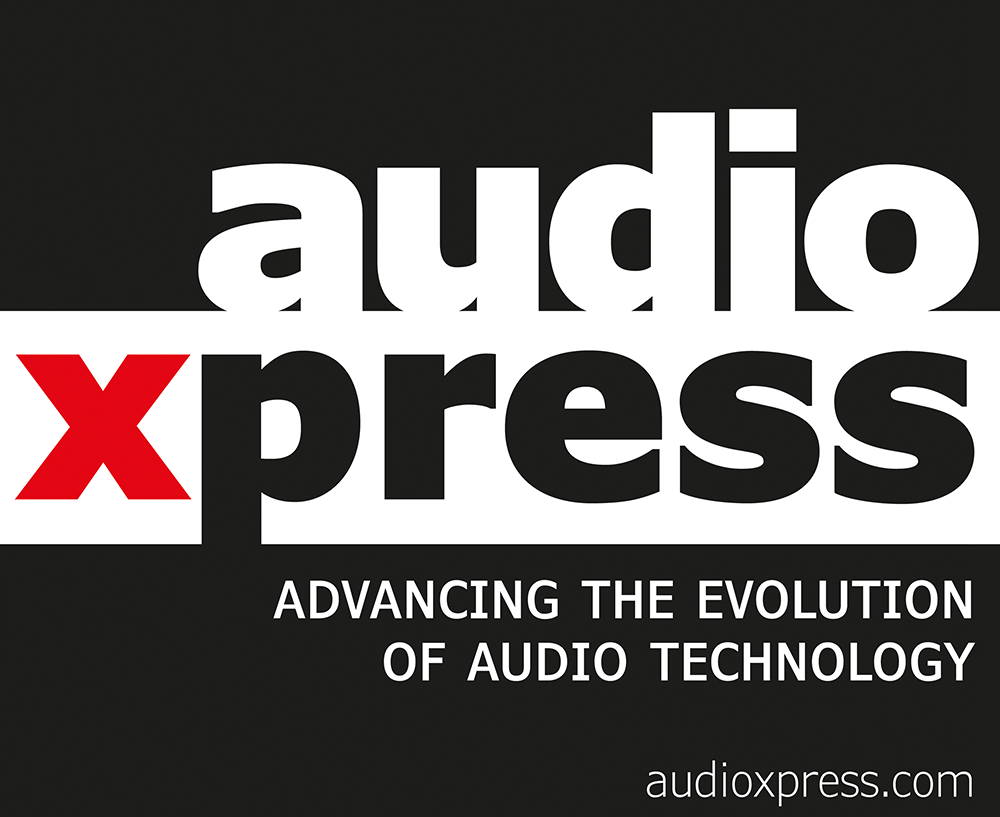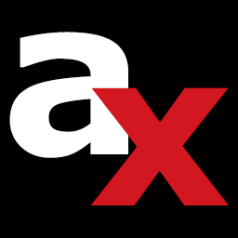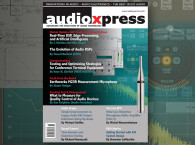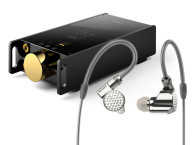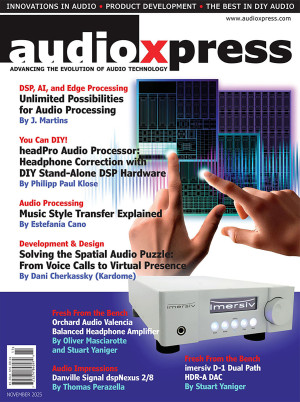 Remember, magazines have enduring value as authoritative sources for intellectual and professional enrichment. Magazines deliver structured, thematic deep-dives and expert perspectives, as you will find in audioXpress November 2025.
Remember, magazines have enduring value as authoritative sources for intellectual and professional enrichment. Magazines deliver structured, thematic deep-dives and expert perspectives, as you will find in audioXpress November 2025.We start with a fresh Market Update DSP, AI, and Edge Processing by editor-in-chief J. Martins. Audio processing powered by Artificial Intelligence and Machine Learning is opening up previously unimaginable possibilities from consumer electronics to automotive. General-purpose microprocessors, including standard PC CPUs, can run DSP algorithms for offline audio rendering, powering a whole industry of studio and music plugins for Digital Audio Workstations (DAWs). Hardware device options can vary greatly these days and include specialized microprocessors (embedded or not), optimized for efficient real-time signal processing. Connected to cloud services or powered on-device and the edge, progress both in digital signal processing techniques, filters, and algorithms is now propelled by new classes of AI-powered devices, adaptive nodes, and neural networks. This article places all those trends into perspective.
As audioXpress always promises the best in DIY, for this DSP-focused issue, we offer a unique project that Philipp Paul Klose designed for himself, creating Headphone Correction with DIY Stand-Alone DSP Hardware. He was curious about the reason why there are no hardware DSPs commercially available to address the specific issues of wired in-ear, on-ear, and over-ear headphones. Unlike solutions targeting speakers, subwoofer integration, and room correction, there is no ready-available solution for headphones. And yet, built-in DSP on modern true wireless earbuds, such as Apple's AirPods, show impressive results for personalization. Called headPro Audio Processor, this project explores that missing link for high-quality headphone playback. A journey exploring the sound personalization options using DSP few have dared to take.
The next article is also an absolute must-read for those passionate about audio processing. Estefanía Cano writes about Music Style Transfer and explains the many approaches over time dedicated to making a vocal section sound futuristic and robot-like; to change the style of a classical piece and make it sound like jazz; to mix a song in the style of Daft Punk’s “Get Lucky,” and much more. In the most direct cases, style transfer starts with two audio signals, and the goal is to transfer a characteristic of the reference signal to the other one. Today, thanks in great part to machine learning and artificial intelligence, the possibilities are endless, while critical ethical considerations also have become the focus of discussion. But many other audio processing techniques also remain approachable. Inspiration can come from anywhere: sounds, textures, timbres, and harmonies that we listen to in our daily lives. Style transfer technologies are a fundamental creative approach that creators and mainstream consumers alike are using daily.
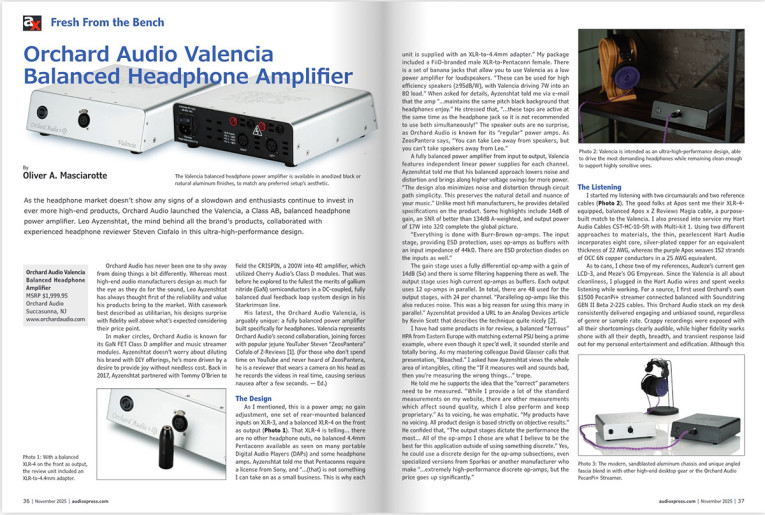
And from our first audio processing articles, this November 2025 issue of audioXpress moves to objective reviews. The first Fresh From the Bench article is about the new Valencia Balanced Headphone Amplifier from Orchard Audio. As Oliver Masciarotte offers in his detailed analysis, and Stuart Yaniger confirms with objective measurements, the Valencia is an interesting Class AB, balanced amplifier design from the New Jersey-based audio company, which until now has mainly focused on power stages for speakers. As the headphone market doesn't show any signs of a slowdown and enthusiasts continue to invest in ever more high-end products, Leo Ayzenshtat, the mind behind all the brand's products, designed Valencia as an ultra-high-performance solution, able to drive the most demanding headphones while remaining clean enough to support highly sensitive ones. The project also represents Leo's collaboration with experienced headphone reviewer Steven Ciofalo.

The second review focuses on an even more ambitious product, that is also the first commercially available realization of a completely new approach to digital audio. The new imersiv D-1 Digital-to-Analog Converter is the first product from a new brand created by Millennia founder John La Grou, introducing the new High Dynamic Range Audio (HDR-A) architecture. The D-1 DAC achieves nearly 29-bit performance, or >170dB dynamic range, and was originally beta-tested at places such as Skywalker, Sony, Disney, Sterling Mastering, and many others who praised the results. In this article for audioXpress, Stuart Yaniger offers the objective review of the imersiv D-1 Dual Path HDR-A DAC, separately from the patented, multi-path audio architecture, which has already been explored previously in audioXpress, and is now available for licensing.
Expanding the range of topics in this issue, the next article is titled “Solving the Spatial Audio Puzzle: From Voice Calls to Virtual Presence.” The premise, explored by Dani Cherkassky (Kardome), results from the fact that Spatial Audio generates a lot of attention in media and entertainment, while some practical uses such as making natural, spatially-aware digital interactions possible remain seldom explored. This article discusses ways to leverage the new Immersive Voice and Audio Services (IVAS), developed for 3GPP Release 18, that supports rich 3D spatial information across everything from mobile calls to virtual meetings, improving how people connect and collaborate. The Development & Design article details how Kardome's SpotFormer technology bridges the gap between raw microphone capture and IVAS' metadata-driven framework, making natural, spatially-aware digital interactions possible.
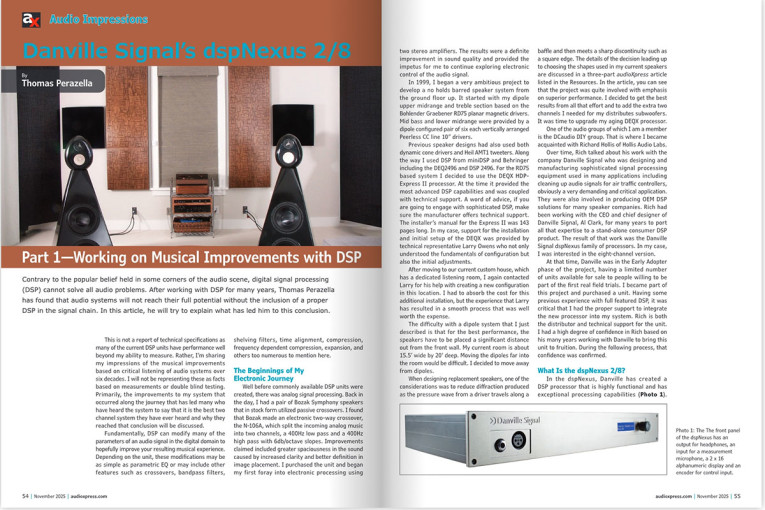
Continuing to expand the topic of audio processing, Thomas Perazella offers his Audio Impressions of the Danville Signal dspNexus 2/8, and shares all the details on how the powerful, high-end audio processor contributed to improving his own listening environment. After working with DSP for many years, Tom is fully aware that no audio system will reach its full potential without the inclusion of the proper DSP in the signal chain. In the first of this two-part article, he explains what has led him to this conclusion by sharing his impressions of the musical improvements based on critical listening of audio systems over six decades. The audio in Tom Perazella's listening room is controlled by the Danville Signal dspNexus 2/8, powered by the Analog Devices ADSP21569 processor. The application that controls all the DSP functions in a quad-amped arrangement is DSP Concept’s Audio Weaver, and there are also 4 AKM AK4499EXQ/AK4191EQ two-chip DACS to output to the 8 amplifier channels.
And we wrap up this November 2025 issue with Richard Honeycutt’s always insightful Hollow-State Electronics column. This month, he reminds us that tube-based systems have actually once powered some major live sound events, including the Woodstock music festival in 1969, with an outdoor audience estimated at 460,000. This article revisits some of the “powerful” hollow-state pro sound amplifiers used in these massive live sound events, from Rudy Bozak's system used at the 1939 New York World's Fair in Flushing Meadows, NY, to the Grateful Dead’s Wall of Sound in the early 1970s. This article also answers the question of how these sound reinforcement systems were even possible with “so little power,” compared to the multi-thousand-watt power amplifiers used in equivalent large venue live sound systems of today.

Remember that all the content featured in every issue of audioXpress is the reason this publication continues to reinforce its role as an essential resource for the audio industry, month after month, 12 times per year. Your support and that of our advertisers is what allows us to keep this publication in print and on all the digital platforms as well as pay our independent authors and contributors for their work.
Subscribe if you haven't done so in order not to miss future issues or renew your subscription. Subscribing to the digital online version allows immediate access and is available here: audioXpress Subscription Services
If you wish to buy a single electronic copy of the magazine or the complete audioXpress archive on USB, from 2000 to 2025 (yes, including the latest issue), just visit our online shop at www.cc-webshop.com.
And check out the new options to access the audioXpress Digital archive:
https://simplecirc.com/subscribe/audioxpress
Don't miss out, get your copy of audioXpress right now at www.gotomyxpress.com
